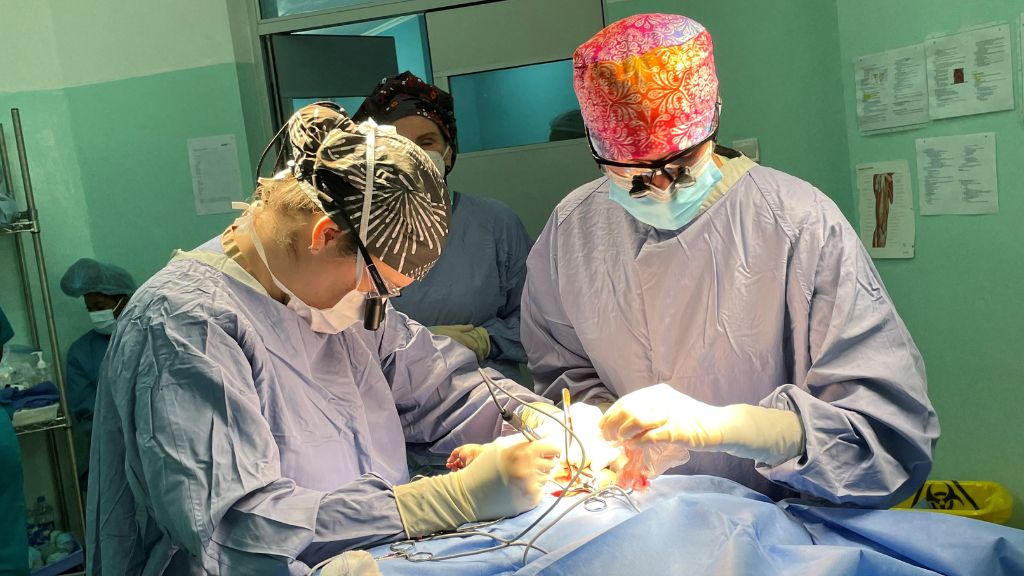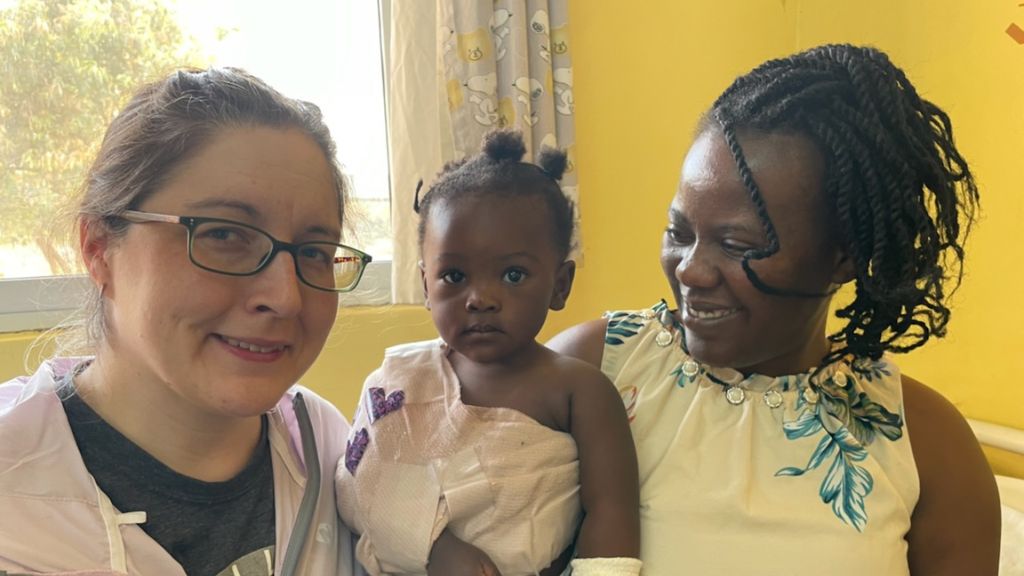Embracing the Unexpected
Hertz Fellow Gwendolyn Hoben has made a career out of embracing the unexpected: from a surprising passion for plastic surgery to volunteering her surgery skills internationally, to applying new research on targeted muscle reinnervation to eliminate phantom limb pain.

Time and again, she has found herself faced with opportunities she never anticipated—beginning with the Hertz Fellowship.
“I couldn’t have guessed at the time what a difference the Hertz Fellowship would make. Becoming part of the Hertz community ended up meaning so much to me,” Hoben said. “I do my best to support things that affected my trajectory and really changed who I am.”
To support the Hertz Foundation, Hoben has set up a recurring donation. “I love recurring things. You just set it up and it goes on and on. I think for really worthwhile things that I believe in, like the Hertz Foundation, one should set them up in perpetuity.”
Hoben, who received a PhD in bioengineering from Rice University in 2007 and an MD from Baylor College of Medicine in 2009, pointed to the lanyard around her neck imprinted with the foundation’s motto from a Hertz Summer Workshop more than 15 years ago. “Freedom to innovate,” she read. “I love that, even on very crummy days, I think, well, this is why I still do this.”
Innovation is part of her daily work in her research and medical practice at the Medical College of Wisconsin, where she has been assistant professor of plastic and reconstructive surgery since 2018—a career move that wasn’t in her original plans. She initially was interested in transplant and tissue engineering. But, as chance would have it, she did her plastic surgery residency at Washington University under Susan Mackinnon, a world-renowned expert in peripheral nerve surgery and “just all-around incredible mentor,” Hoben said.
After a two-year postdoc with Mackinnon, Hoben began to build her own practice and lab, and became particularly interested in amputations and a new surgical technique called targeted muscle reinnervation (TMR).
“Amputations hadn’t really changed much since the Civil War,” Hoben said, until TMR was developed to power prosthesis. In what Hoben calls a “happy coincidence,” it was observed that TMR patients had no phantom limb pain or neuroma pain, which are both common among amputees.
“Targeted muscle reinnervation breaks a lot of rules,” Hoben said. She explained that surgeons typically connect like things—a motor nerve to a motor nerve, a sensory nerve to a sensory nerve. TMR breaks this rule by connecting a bundle of mixed nerves to a single motor nerve, creating an EMG signal for a prosthesis. By all accounts, Hoben said, this surgery should also result in phantom pain or a neuroma, a painful growth of nerve tissue, because of the sensory fibers involved.
“The big mystery is what are the sensory fibers doing?” The fact that they’re not causing pain or creating a neuroma is shocking among fellow plastic surgeons, she said.
For Hoben, the mystery of TMR has produced yet another exciting opportunity. “We don’t know how it works. So I’m developing an animal model that we can study to understand why on earth this is successful.”
Solving mysteries and piecing puzzles together are Hoben’s favorite aspects of her work.
“Plastic surgery is principle-based, which means you don’t have a standard set of problems that you commonly see. Trauma doesn’t follow any rules.”
Every patient brings something different to the table, she said. For example, in breast reconstruction, the variables include the type of cancer, whether they’ve had radiation, or whether to use an implant or tissue from elsewhere in the body. “There’s no single right answer for almost any reconstructive question.”

Hoben takes a personalized approach to all the surgeries she performs, including the work she does at a clinic for the uninsured and through Surgicorps International, a nonprofit that provides free surgical and medical care to people in need in developing countries. Both are opportunities for which she volunteers, despite her heavy work schedule. “None of us have time for volunteer work, right? You just do it. Some things fall into your lap and it’s just the right thing to do.”
She recently spent a week in Zambia, where Surgicorps International is building a program to treat injuries related to the birth process—common occurrences in a country where babies are usually born in clinics without the resources for Cesarean sections.
“The first year we went, we had 12 patients. This year we evaluated over 50,” she said. It’s a huge need that, for Hoben, necessitates action. “There’s a verse that has always stuck with me: ‘To whom much is given, much will be required.’ And I feel like I’ve been given amazing things.”
